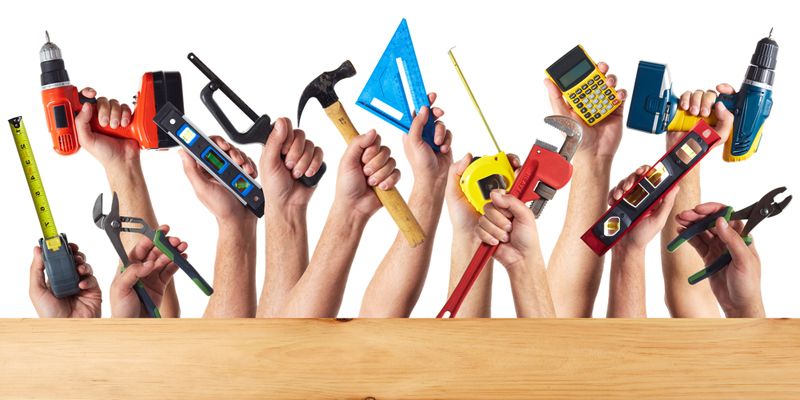The ‘Buy’ button for hyper-local services
E-commerce has resulted in more of a paradigm shift in consumer behavior than we realize. Not too long ago, Indian consumers needed to touch and feel everything, and had to haggle with vendors over prices, before any decisions were made. Nobody even thought of buying a sofa set without actually sitting on it, or a dress without trying it on. Now though, we buy everything, from clothes, TVs, and even homes, without any of this and without blinking an eye.The consistent and seamless experience of buying anything, whether it is a book worth a hundred rupees, oran LED TV worth a lakh, online,has made it all possible.

A revolution of equal or bigger magnitude is waiting to happen in the world of hyper-local services. Marketplaces solving this problem today connect us to a bunch of service providers (from plumbers to pest control to photographers). However, once the connect has been made, the customer still has to go through a lot of trouble,defining what needs to be done, haggling for prices, and handling disagreements.Also, there isno recourse if the job was performed poorly, and so on. Clearly, this still leaves a lot to be desired, as far as customer experience is concerned.
So what needs to be done?
To solve the real customer pain-points and ensure a smooth experience, one couldlook to sectors such as software, travel, and hotels, as examples. In all these sectors, the productization of services has brought in enormous value to end customers. It brings in the advantages of upfront pricing, comparison-shopping, marketplace competitiveness and one-click buying.
In order to give users a truly good experience,services marketplaces need to standardize their services so that users get a consistent and seamless experience, much like products. The focus should be on making things buyable, not just connecting to merchants. As a user, wouldn’t it be awesome to be able to do the following things with the tap of a button?
- Rent a window AC for one month
- Buy four yoga sessions at home (60 minutes each)
- Buy a two-hour magician service for a birthday party
- Buy the services of a birthday photographer for two hours,which culminates in a 100-photo album.
The ‘buy’ button for services
A service marketplace would need to take care of the following things:
- Standardize the service: In order to standardize services, one needs to treat them like a SKU (Stock Keeping Unit). While building Service as an SKU, one cannot just mimic a service provider rate card and add them as an SKU. Currently in the industry, there is no standardization of rate cards and pricing units. And specifications of a service vary across merchants, for the same service. The user does not know how exactly the service is being priced, and the providers quote prices based on the paying capacity of the user. Standardizing services, and their prices, will deliver a truly transparent experience to the consumers.
- Market governed upfront pricing: Rather than enforcing strict prices on every service, let service providers govern their own prices. Just like hotel rooms or flights, services are a perishable inventory, so if a service provider wishes to offer their services at a lower price point at any time, they should be able to do that. Market dynamics will ensure competitive prices, just like they do in product e-commerce.
- Define quality parameters. The best analogy for this is the hotel industry,which has been able to standardize experiences through defining well-documented star rating parameters. Even though each room has a different ambience, a star rating roughly categorizes the experience a user might have. One needs to define a similar star rating for services, which will determine the quality of the vendor offering the service.
- Managing fulfillment: Product e-commerce would not exist at this scale if the people and organizations involved did not have a completely managed fulfillment experience. Ensuring that something will be delivered to the customer in the time promised, with a well defined return policy, makes the entire buying experience exceptional for the user.In case of services,customers should have same expectations from a marketplace. The marketplace needs to ensure that the customer’s experience is managed at each step; scheduling a time, handling cancellations, ensuring service providers meet the appointment, and guaranteeing quality of services would all need to be managed by the marketplace.
- Create a proposition for service providers: A marketplace needs to ensure that the interests of service providers are aligned with the success of the marketplace. Such a marketplace would need to guarantee transactions (not leads), and monetization would happen only once the providers generate actual money from the marketplace.
The challenge in service marketplaces is taking care of customer experience, in areas including but not limited toservice quality, pricing, timeliness, customer service, invoicing, payment and security.
About the Author:
Sunil Goyal is the Co-founder of Near.in, an e-commerce marketplace for hyperlocal services. He is an alumni of IIT Delhi and has earlier co-founded Wirkle, a mobile apps company. He sold it to a Silicon Valley based firm Location Labs, which was later acquired by AVG.)
(Disclaimer: The views and opinions expressed in this article are those of the author and do not necessarily reflect the views of YourStory.)






